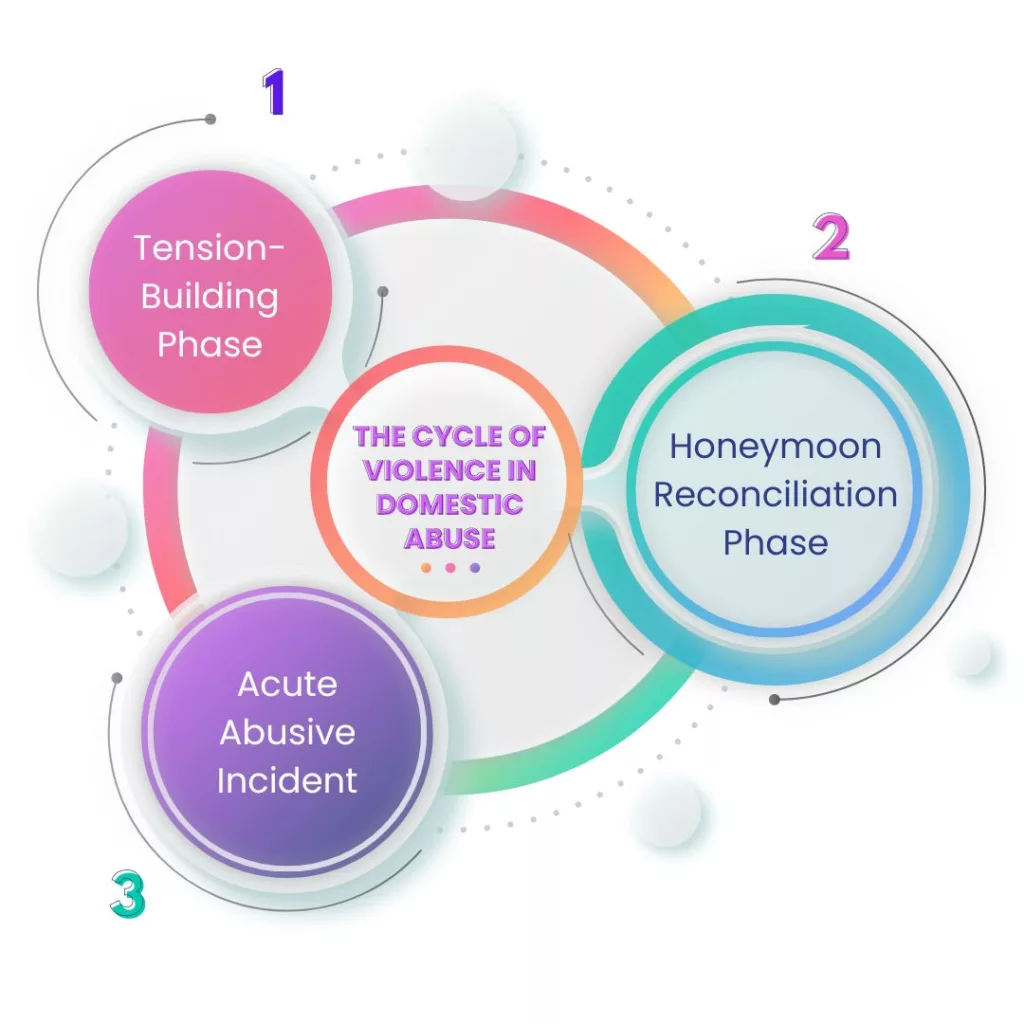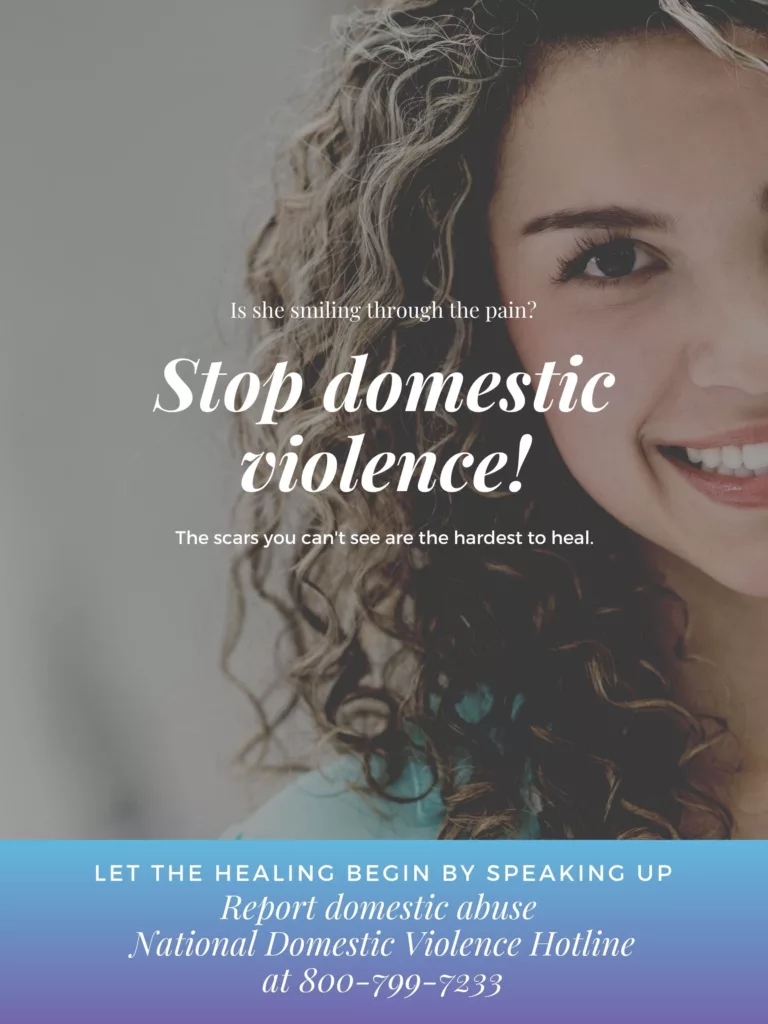Definition of Domestic Violence
Domestic violence is a harrowing experience that can inflict long-lasting physical, mental, and emotional scars on survivors. This pattern of behavior is a means to exert control over another person, often through physical, emotional, or psychological abuse.
Forms of Domestic Violence
Domestic violence can manifest in various forms, including physical, sexual, emotional, and psychological abuse. It can extend to encompass economic control, isolation, and intimidation. Survivors of domestic violence commonly grapple with fear, anxiety, depression, and post-traumatic stress disorder.
Physical Injuries: Many survivors bear the physical wounds of domestic violence, ranging from broken bones to bruises and cuts. These injuries are not just skin-deep; they symbolize the deep-seated pain that victims endure.
Emotional Scars: The aftermath of domestic violence leaves survivors grappling with profound emotional trauma. Trust becomes a scarce commodity, self-esteem crumbles, and forging healthy relationships becomes a herculean task. Importantly, survivors should know that the blame for the violence never rests on their shoulders, and help is always available.
The Reality of Domestic Violence: Understanding the Victim's Experience
The emotional journey of domestic violence survivors can vary significantly based on their individual circumstances. Here are some common emotions that victims may grapple with:
Fear and Anxiety: Victims often live in a perpetual state of dread, uncertain about when the next bout of violence will erupt. Paradoxically, they may feel guilty and ashamed, even though they bear no blame for the abuse.
Guilt and Shame: Victims may be plagued by intense feelings of guilt and shame, despite being entirely blameless. They might unjustly shoulder the responsibility for their predicament, feeding into a vicious cycle of self-blame.
Anger and Frustration: The victims’ emotions may oscillate between rage towards their abusers and frustration over their inability to break free from the oppressive situation.
Isolation and Loneliness: Abusers often employ tactics to isolate victims from their support networks, leaving them feeling detached and lonely.
Low Self-esteem and Self-worth: The constant barrage of belittlement, criticism, and demeaning behavior chips away at a victim’s self-esteem and self-worth. Negative messages from the abuser can lead to a distorted self-perception.
Depression and Hopelessness: Abuse and emotional trauma often manifest as symptoms of depression, including sadness, loss of interest, and a pervasive sense of hopelessness. These feelings can persist long after the abuse has ended.
Confusion and Ambivalence: Victims in abusive relationships often grapple with conflicting emotions. Moments of love and affection towards their abusers may intermingle with fear and distrust, creating a bewildering emotional landscape that makes leaving the relationship exceedingly challenging.
Physical and Psychological Symptoms: The toll of domestic violence isn’t just emotional; it extends to the physical and psychological realms. Victims may experience headaches, sleep disturbances, digestive issues, flashbacks, nightmares, and post-traumatic stress symptoms.
It’s crucial to emphasize that victims are never to blame for these feelings and experiences. Seeking professional help is a crucial step in breaking free from domestic violence, and support networks, such as helplines and shelters, can provide a safe haven for recovery.
Root Causes of Domestic Violence
Three factors are known to contribute to domestic violence: substance abuse, mental health issues, and unresolved childhood trauma. It’s vital to note that these factors do not excuse domestic violence but rather help illuminate some underlying complexities.
Substance Abuse: Alcohol or drug addiction can exacerbate domestic violence by impairing judgment, increasing aggression, and reducing inhibitions. Substance abuse can also worsen existing relationship conflicts and financial stressors, elevating the risk of violence.
Mental Health Issues: While most individuals with mental health issues are not violent, certain conditions can heighten the risk of abusive behavior in intimate relationships. Uncontrolled anger, impulse control disorders, personality disorders, and untreated mood disorders are some examples.
Unresolved Childhood Trauma: Childhood trauma, left unaddressed, can perpetuate a cycle of violence in adulthood. Survivors of childhood abuse may struggle with managing emotions, establishing healthy boundaries, and maintaining positive relationships, potentially repeating patterns of violence.
Addressing domestic violence requires a comprehensive approach that encompasses prevention, education, awareness, early intervention, and support services for both victims and perpetrators. These services must be readily available to make a meaningful impact.
Domestic violence against women is unfortunately a widespread issue that occurs with alarming frequency.
While domestic violence affects both men and women, statistics show women disproportionately experience it.
Here are some key findings regarding the prevalence of domestic violence against women:
The World Health Organization reports 1 in 3 women globally has experienced physical or sexual violence by an intimate partner or sexual violence by a non-partner.
National Statistics: Prevalence rates can vary between countries, but many national studies indicate high levels of domestic violence against women. In the United States, 1 in 4 women has experienced severe physical violence by an intimate partner.
Underreporting: Domestic violence is often underreported due to factors such as fear, shame, societal stigma, and cultural norms. The actual prevalence is likely higher than the reported figures suggest.
Impact on Women’s Health: Domestic violence has significant physical and psychological consequences for women. Domestic violence can lead to injuries, health issues, mental health problems like depression and PTSD, and even death.
Intersectionality: Domestic violence intersects with various forms of discrimination and marginalization, such as race, ethnicity, socioeconomic status, disability, and sexual orientation. These intersections can exacerbate the vulnerability of certain groups of women to domestic violence.
Efforts worldwide address domestic violence against women through legal measures, campaigns, services, and gender equality initiatives.
No, domestic violence is never justified. Domestic violence involves the use of physical, emotional, or sexual force, control, or intimidation against a partner or family member. It is a violation of basic human rights and is considered a serious crime in most jurisdictions.
Justifying domestic violence goes against ethical principles, human rights standards, and the well-being and safety of individuals. No circumstance, provocation, or disagreement justifies the use of violence or abusive behavior within an intimate or family relationship.
It’s important to promote a culture of respect, equality, and non-violence in relationships. Addressing conflicts and disagreements through open communication, negotiation, and seeking professional help, if needed, are healthier alternatives to resorting to violence or abuse.
The impact can extend beyond the immediate period of abuse and may persist for years or even a lifetime. Here are some common long-term effects of domestic violence:
Physical Health Consequences: Victims of domestic violence may suffer from long-term physical health problems resulting from the abuse. These can include chronic pain, injuries, impaired mobility, sexual and reproductive health issues, and increased vulnerability to various medical conditions.
Mental Health Disorders: Domestic violence is strongly associated with mental health disorders. Survivors may experience long-term psychological consequences such as post-traumatic stress disorder (PTSD), depression, anxiety disorders, substance abuse, eating disorders, self-harm, and suicidal ideation.
Low Self-esteem and Self-worth: The constant belittlement, demeaning behavior, and emotional abuse inflicted by an abuser can deeply undermine a victim’s self-esteem and self-worth. Survivors may struggle with feelings of inadequacy, shame, and a negative self-perception that can persist long after the abusive relationship ends.
Intimate Relationship Challenges: Survivors of domestic violence may experience difficulties in forming and maintaining healthy intimate relationships in the future. Trust issues, fear of vulnerability, and emotional scars from past abuse can impact their ability to establish healthy connections and establish boundaries.
Parenting Challenges: If children are involved, domestic violence can impact the parent-child relationship and parenting abilities. Survivors may struggle with parenting challenges, feel guilt, and worry about the impact of the violence on their children. The intergenerational cycle of violence may also be a concern.
Social and Interpersonal Challenges: Survivors of domestic violence may face social and interpersonal challenges in various aspects of life. These can include difficulties in establishing trust, forming friendships, and participating in social activities. Isolation and social withdrawal can persist even after the abusive relationship ends.
Economic and Financial Impact: Domestic violence can have significant economic consequences for survivors. Financial control and manipulation by the abuser, loss of employment due to the violence, and economic dependence can impact the survivor’s financial stability and ability to rebuild their lives.
Risk of Revictimization: Survivors of domestic violence may be at an increased risk of experiencing further abuse in subsequent relationships. The trauma and learned behaviors from the previous abusive relationship can impact their ability to recognize and navigate healthy relationships.
Impact on Children: Children who witness or experience domestic violence are particularly vulnerable to long-term effects. They may experience emotional, behavioral, and developmental problems that can persist into adulthood. The trauma of witnessing violence can also increase their risk of becoming victims or perpetrators of violence in the future.
Healing and recovery are possible with appropriate support and interventions.

Breaking the Cycle of Domestic Violence
Breaking the cycle of domestic violence demands a multifaceted, holistic approach involving individuals, communities, institutions, and society as a whole. Here are key strategies to combat this pervasive issue:
Education and Awareness: Raising awareness about domestic violence, its repercussions, and available resources is paramount. Education can challenge societal norms that perpetuate violence, empower individuals to identify and address abusive behaviors and promote healthy relationship dynamics.
Legal Measures: Enacting and enforcing laws criminalizing domestic violence, protecting victims, and holding perpetrators accountable is essential. Legislation pertaining to restraining orders, prosecution of offenders, and legal support for victims plays a pivotal role.
Support Services: Ensuring accessible, well-funded support services is critical. Hotlines, shelters, counseling, legal aid, and healthcare services provide survivors with a lifeline to seek help, find safety, and rebuild their lives.
Empowerment of Survivors: Empowering survivors with resources such as job training, financial assistance, housing support, and emotional care is pivotal. Empowerment programs enable survivors to break free from the cycle of violence and regain independence.
Prevention Programs: Implementing prevention programs targeting individuals of all ages can reshape attitudes and behaviors. These programs, in schools, workplaces, and communities, promote healthy relationship skills, conflict resolution, and gender equality.
Engaging Men and Boys: Engaging men and boys in prevention and intervention efforts is key. Promoting positive masculinity and challenging harmful gender norms can reduce violence and foster respectful relationships.
Addressing Root Causes: Eradicating domestic violence means tackling its root causes, such as gender inequality, social norms, and economic disparities. Promoting gender equality, economic empowerment, and challenging cultural norms that perpetuate violence is pivotal.
Ending domestic violence necessitates unwavering commitment, sustained effort, and collective action across all segments of society.
Be a Voice of Support
If you suspect someone is a victim of domestic violence or abuse, speaking up is crucial. Express your concerns privately, offering a listening ear and a non-judgmental space. Share the signs you’ve observed and assure them of your readiness to assist in any way possible. Your intervention might just save a life.
In the journey to end domestic violence, every compassionate voice and empathetic action brings us closer to a world where no one has to endure the pain and suffering it inflicts.
Note: This article is intended to provide information and support to those affected by domestic violence. If you or someone you know is in immediate danger, please contact your local authorities or a domestic violence hotline.






